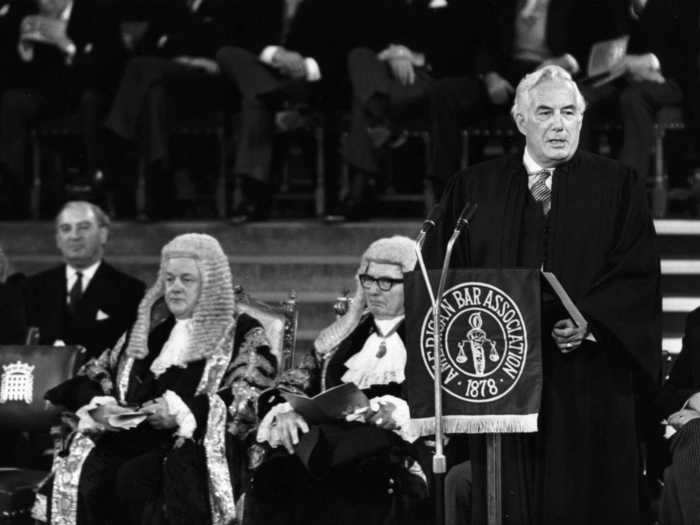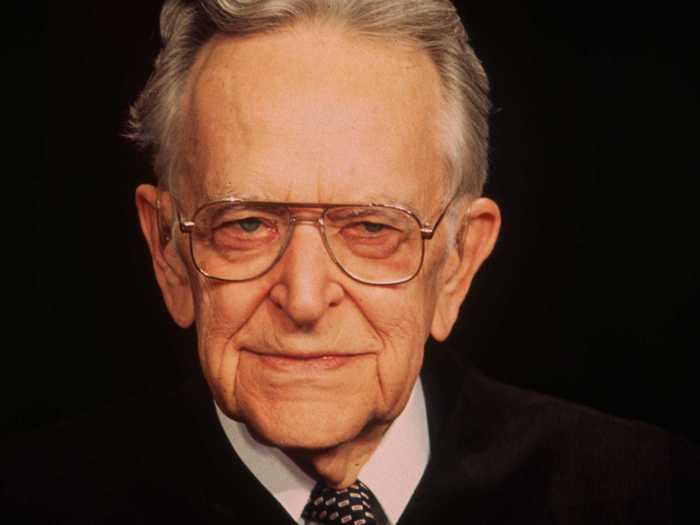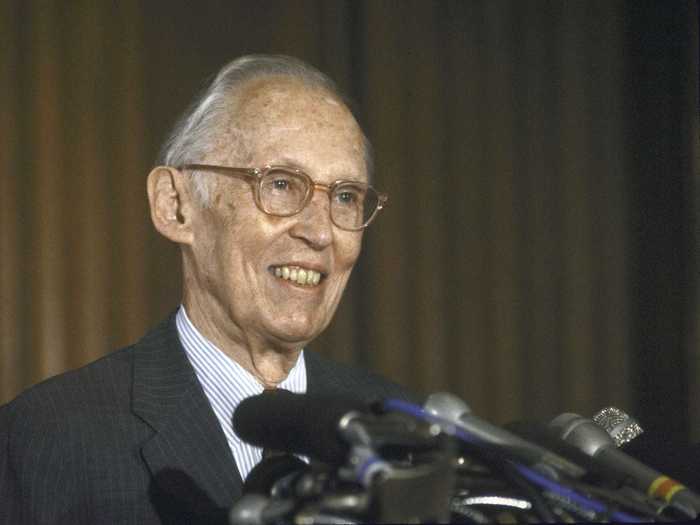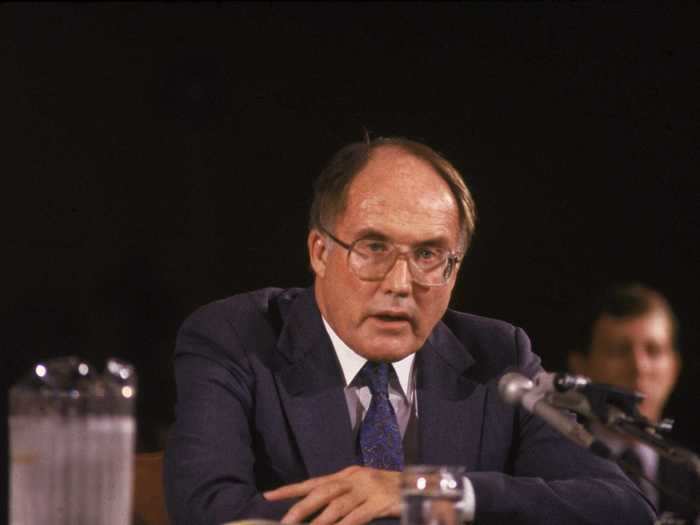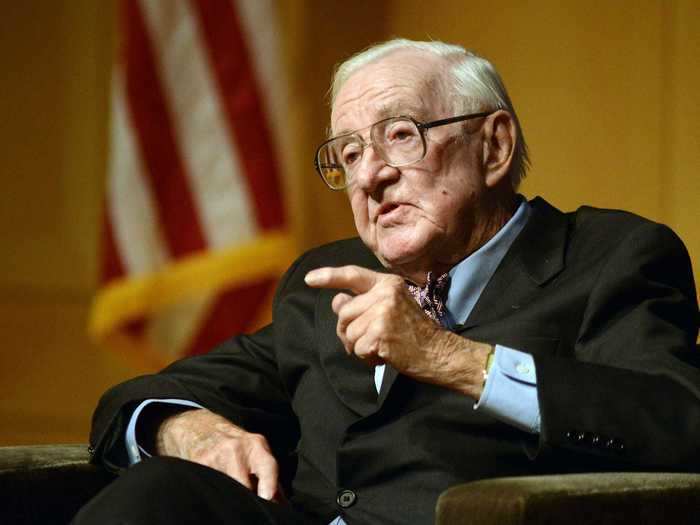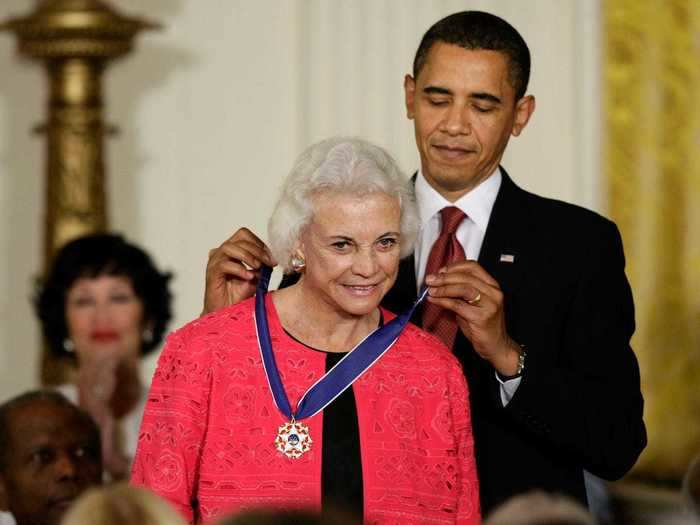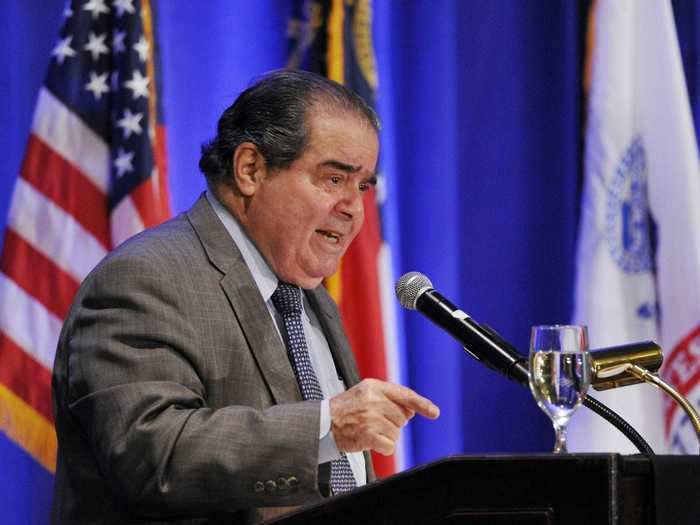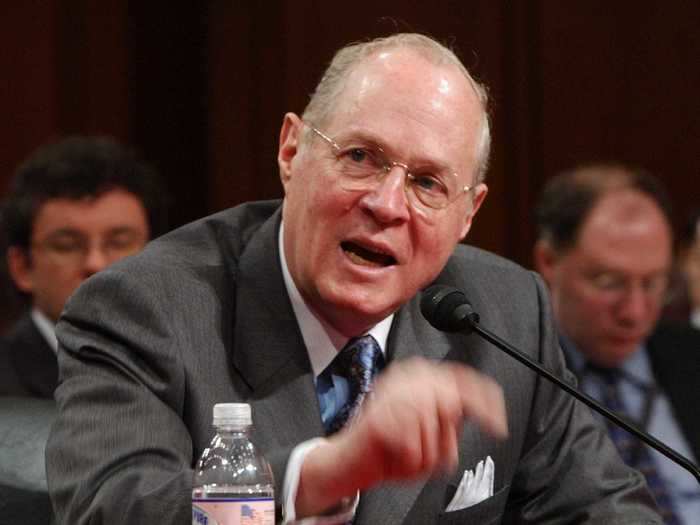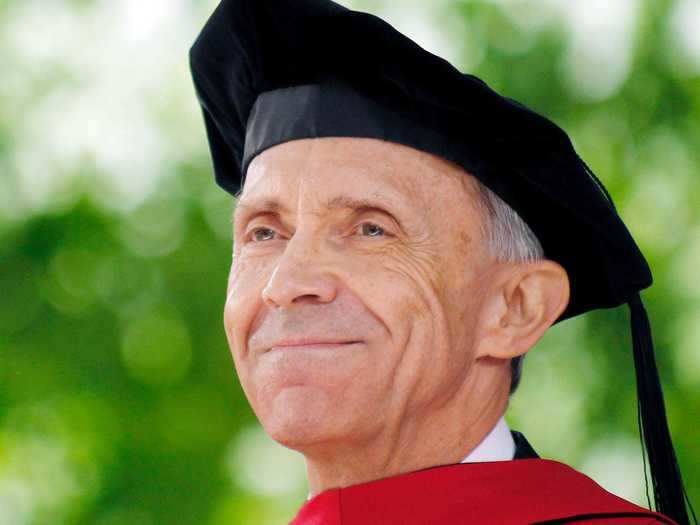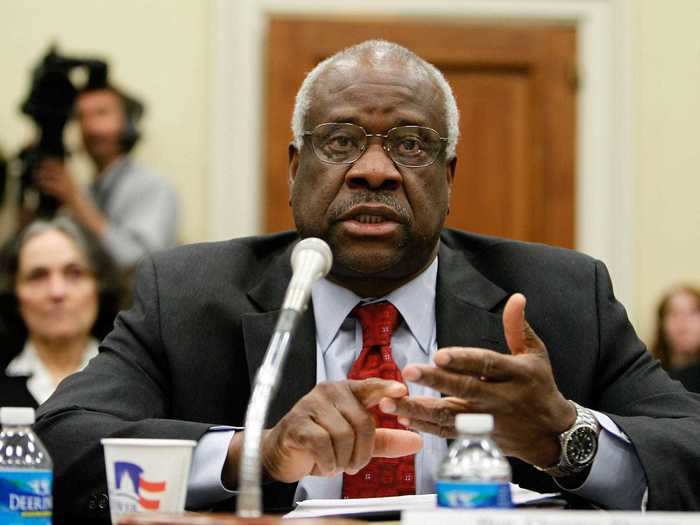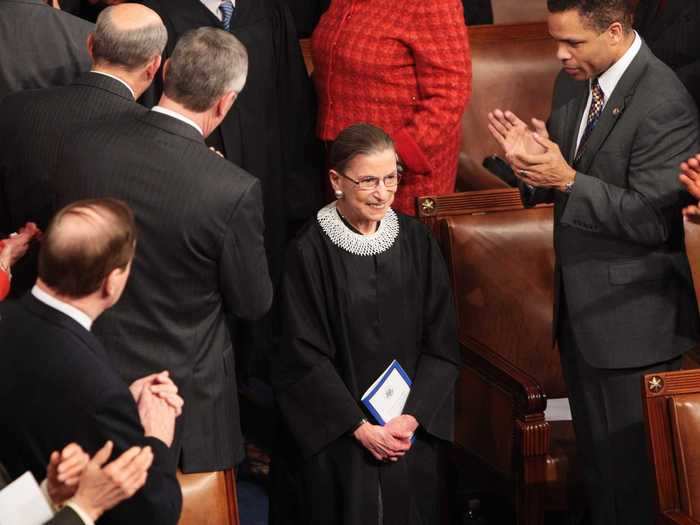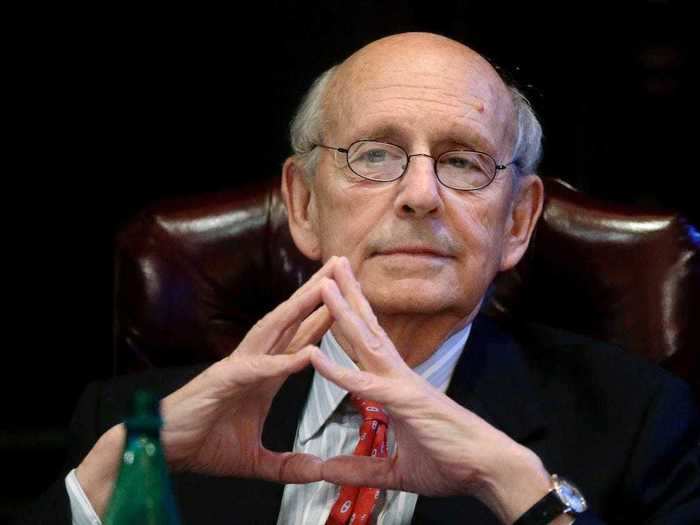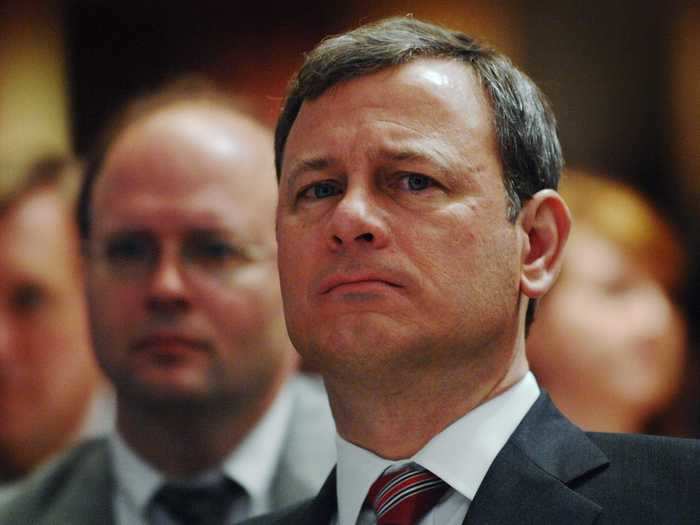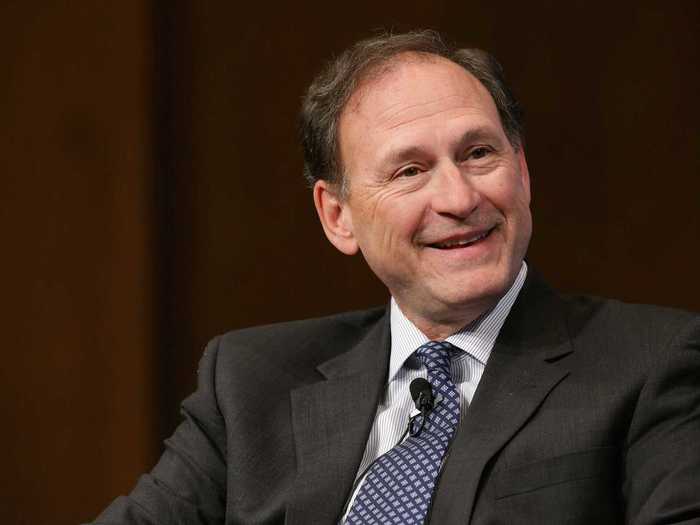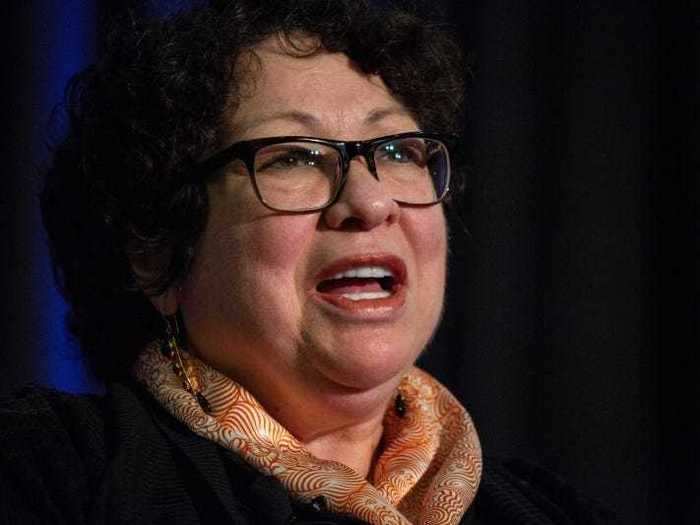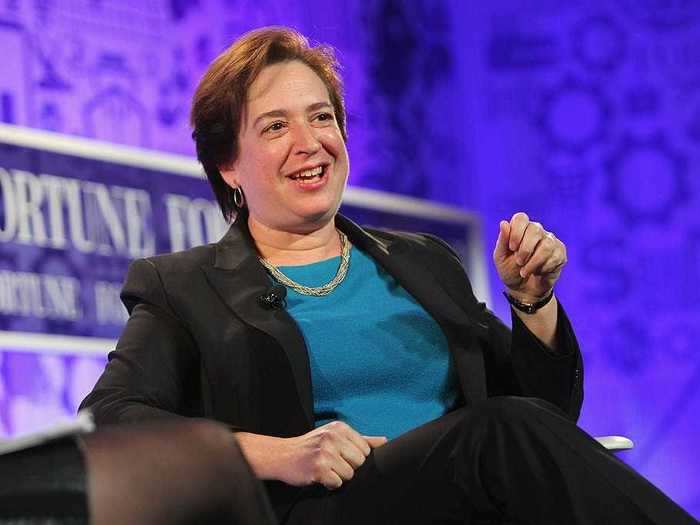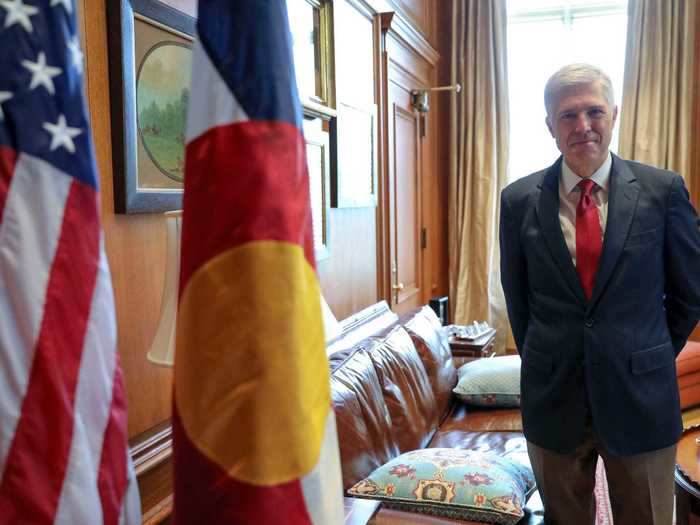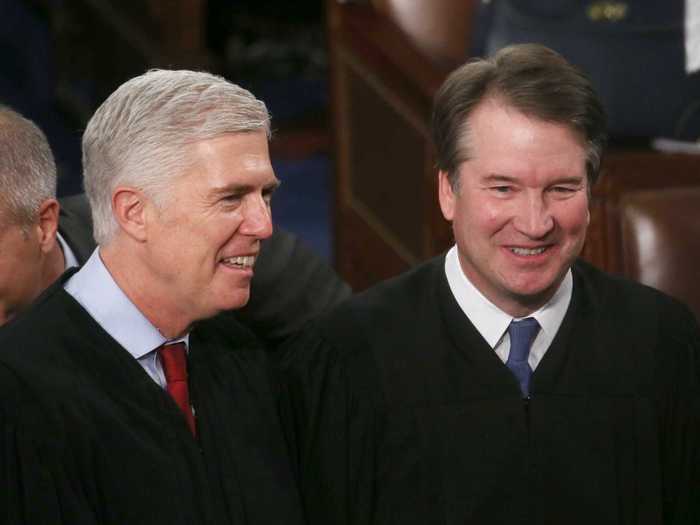Jonathan Ernst/Reuters
- Most recent Supreme Court Justices have taken similar educational and career paths to the highest court in the US.
- Many studied law at Harvard or Yale.
- Some served as clerks to other judges after law school, and many were judges on circuit courts before being nominated to serve on the Supreme Court.
Ruth Bader Ginsburg, who served as an associate justice of the Supreme Court, died at 87 due to complications from cancer.
There has been a debate over whether President Donald Trump should fill the vacant seat with the election only a few weeks away. However, Republican Senator Mitt Romney's support along with that of most other Republican senators means Trump will likely get to choose Ginsburg's replacement.
The Supreme Court may typically see fewer than 100 cases a year, but the court makes some of the most important decisions that affect everyday life in the US. For instance, Brown v. Board of Education formally banned racial segregation in schools, Roe v. Wade case was a landmark decision securing abortion rights, and Phillips v. Martin Marietta Corp. found companies cannot discriminate from hiring mothers of pre-school-age children.
Because Supreme Court Justices serve for life, the choice of who will join the other eight Supreme Court justices is a very serious decision.
Although there are no set requirements for appointment to the nation's highest court, there are clear educational and career patterns among recent justices. Of those who have been appointed since the late 1960s, all have, unsurprisingly, attended law school. Many of these justices studied at Harvard or Yale Law School. Studying political science or history as undergraduates have also been popular choices among these justices.
According to The Supreme Court Justice site, James F. Byrnes, who served on the Supreme Court from 1941 to 1942, was the "last justice to be appointed who did not attend any law school."
Several Supreme Court justices served as clerks to a judge after graduating law school. For instance, Chief Supreme Justice John Roberts clerked for Judge Henry Friendly and former Chief Justice William Rehnquist when the latter was an associate justice.
Many recent justices served on the US Court of Appeals prior to being appointed. Notably, many worked as judges in the District of Columbia circuit.
Additionally, the chief justice does not necessarily have to been an associate justice. However, five of the total 17 chief justices were previously associates per the official Supreme Court Justice website.
Read on to see the career paths of associate and chief justices who have been appointed in the last five decades.
Warren Earl Burger served as the chief justice from June 23, 1969 to September 26, 1986.
Keystone/Getty Images
Before being nominated as the 15th chief justice by Richard Nixon, Burger was a judge on the US Court of Appeals for the District of Columbia Circuit since March 29, 1956.
Undergraduate education: University of Minnesota
Law School: St. Paul College of Law (today called Mitchell Hamline School of Law)
Source: Oyez Project
Harry A. Blackmun served as an associate justice from June 9, 1970 to August 3, 1994.
Ron Sachs/Consolidated News Pictures/Getty Images
He was a clerk for Judge John B. Sanborn of the Eighth Circuit. Blackmun took over Sanborn's seat on the Eighth Circuit in 1959 before being nominated as a Supreme Court justice.
Undergraduate education: Harvard University, degree in mathematics
Law School: Harvard Law School
Source: Britannica
Lewis F. Powell, Jr. served as an associate justice from January 7, 1972 to June 26, 1987.
Diana Walker//The LIFE Images Collection via Getty Images
Before being nominated by Richard Nixon, Powell was chairman of the Virginia Board of Education from 1968 to 1969 and served on the board from 1961 to 1969. He went back to law practice after serving in World War II.
Undergraduate education: Washington and Lee University
Law Schools: Washington and Lee University School of Law, Harvard Law School
Source: Britannica
William Rehnquist served as an associate justice from January 7, 1972 to September 26, 1986 before he was elevated to chief justice until September 3, 2005.
Ricardo Watson/Pictorial Parade/Getty Images
Rehnquist was a clerk for Associate Justice Robert Jackson from 1952 to 1953. Additionally, he worked at a private practice in Phoenix, Arizona, for 16 years.
Before being nominated as an associate justice by Ronald Reagan, Rehnquist was assistant attorney general for the Justice Department from 1969 to 1971. In addition to going to law school, he earned a master's in Political Science at Stanford and a master's in government from Harvard University.
Undergraduate education: Stanford University, degree in political science
Law School: Stanford Law School
Source: Oyez Project
John Paul Stevens served as an associate justice from December 19, 1975 to June 29, 2010.
Retired Supreme Court Justice John Paul Stevens revealed Thursday that he's not a supporter of Brett Kavanaugh.
William Thomas Cain/Getty
Stevens was a clerk for Supreme Court Justice Wiley Rutledge before working at a law firm. Before being nominated by Gerald Ford, Stevens was a judge on the US Court of Appeals for the Seventh Circuit.
Undergraduate education: University of Chicago, degree in English
Law School: Northwestern Law School
Source: Britannica
Sandra Day O'Connor served as an associate justice from September 25, 1981 to January 31, 2006.
In this Aug. 12, 2009 file photo, President Barack Obama presents the 2009 Presidential Medal of Freedom to Sandra Day O'Connor.
J. Scott Applewhite/AP Photo
O'Connor was the first woman to serve on the Supreme Court. Before being nominated by Ronald Reagan, O'Connor was a judge on the Arizona State Court of Appeals for Division One after serving as a judge of the Maricopa County Superior Court for Division 31.
Undergraduate education: Stanford, degree in economics
Law School: Stanford Law School
Source: History
Antonin Scalia served as an associate justice from September 26, 1986 to February 13, 2016.
Antonin Scalia.
Dave Tulis/AP
Before being nominated, Scalia was a judge on the US Court of Appeals for the District of Columbia from 1982 to 1986. He was also a law professor at the University of Virginia and later at the University of Chicago Law School.
Undergraduate education: Georgetown University, degree in history
Law School: Harvard Law School
Source: Oyez Project, Business Insider
Anthony M. Kennedy served as an associate justice from February 18, 1988 to July 31, 2018.
Supreme Court Justice Anthony Kennedy testifies before a Senate Judiciary Committee hearing on Capitol Hill in Washington.
Dennis Cook (Associated Press)
Before being nominated, Kennedy was a judge on the US Court of Appeals for the Ninth Circuit from May 1975 to February 1988 after taking over his father's law practice.
Undergraduate education: Stanford University, degree in political science
Law School: Harvard Law School
Source: Oyez Project, Business Insider
David H. Souter served as an associate justice from October 9, 1990 to June 29, 2009.
Adam Hunger/Reuters
Before being nominated by George H.W. Bush, Souter served as a judge on the US Court of Appeals for the First Circuit from May 1990 to October 1990. He also studied at Magdalen College at Oxford before going to Harvard Law School.
Undergraduate education: Harvard University, degree in philosophy
Law School: Harvard Law School
Source: Oyez Project
Clarence Thomas has served as an associate justice since October 23, 1991.
Alex Wong/Getty Images
Before being nominated by George H.W. Bush, Thomas was a judge on the US Court of Appeals for the District of Columbia Circuit from March 1990 to October 1991. Thomas was also previously the chair of the Equal Employment Opportunity Commission for nearly eight years during Reagan's administration and part of Bush's administration.
Undergraduate education: College of the Holy Cross, degree in English literature
Law School: Yale Law School
Source: Supreme Court of the United States, Business Insider
Ruth Bader Ginsburg had served as an associate justice since August 10, 1993.
Associate Justice of the Supreme Court Ruth Bader Ginsburg is cheered as she arrives before President Barack Obama addresses a joint session of Congress on Tuesday, February 24, 2009, in the House of Representatives Chamber of the U.S. Capitol in Washington, DC.
George Bridges/MCT/Tribune News Service via Getty Images
Ginsberg served as a clerk for Judge Edmund Palmieri of the US District Court for the Southern District of New York. Before becoming the second woman on the Supreme Court, Ginsburg served as a judge on the US Court of Appeals for the District of Columbia Circuit.
She was also the first woman professor at Columbia Law School to earn tenure. She advocated for women's rights and was the co-founder of the Women's Rights Project of the American Civil Liberties Union.
Undergraduate education: Cornell University, degree in government
Law School: Went to Harvard Law School before transferring to Columbia Law School
Source: Oyez Project, Business Insider, ACLU
Stephen G. Breyer has served as an associate justice since August 3, 1994.
United States Supreme Court Justice Stephen Breyer.
AP Photo/Steven Senne
Breyer was a clerk for Associate Justice Arthur Goldberg. Before being nominated by Bill Clinton, Breyer was a judge and then chief judge of the US Court of Appeals for the First Circuit.
Undergraduate education: Stanford University, degree in philosophy. He also studied at Magdalen College at Oxford University
Law School: Harvard Law School
Source: Supreme Court of the United States, Business Insider
John G. Roberts, Jr. has served as the chief justice since September 29, 2005.
Chief Justice John Roberts at a prayer breakfast in 2008.
Reuters/Jonathan Ernst
Roberts was a clerk for Judge Henry Friendly of the US Court of Appeals for the Second District and later for Supreme Court Justice William Rehnquist when the latter was an associate justice.
He previously was a special assistant to Attorney General William French Smith from 1981 to 1982. Before being nominated as the 17th chief justice, Roberts was a judge on the US Court of Appeals for the District of Columbia Circuit from June 2003 to September 2005.
Undergraduate education: Harvard University, degree in history
Law School: Harvard Law School
Source: Supreme Court of the United States, Business Insider
Samuel A. Alito, Jr. has served as an associate justice since January 31, 2006.
Chip Somodevilla/Getty Images
He was a clerk for Judge Leonard Garth of the US Court of Appeals for the Third Circuit from 1976 to 1977. Before being nominated, Alito worked for about three years as a US attorney for the District of New Jersey and was a judge on the US Court of Appeals for the Third Circuit.
Undergraduate education: Princeton University, degree from the Woodrow Wilson School of Public and International Affairs
Law School: Yale Law School
Source: Supreme Court of the United States, Business Insider
Sonia Sotomayor has served as an associate justice since August 8, 2009.
Associate Justice of the Supreme Court of the U.S. Sonia Sotomayor speaks during Princeton University's "She Roars: Celebrating Women at Princeton" conference in Princeton
Reuters
Before being nominated by Barack Obama, Sotomayor was a judge on the United States Court of Appeals for the Second Circuit since 1998. When she was appointed to the high court in 2009, she became the first Latina Supreme Court Justice.
Undergraduate education: Princeton University, degree in history
Law School: Yale Law School
Source: Supreme Court of the United States, Business Insider
Elena Kagan has served as an associate justice since August 7, 2010.
Kagan was a clerk for Judge Abner Mikva of the US Court of Appeals for the District of Columbia Circuit. Later, Kagan was a clerk for US Supreme Court Justice Thurgood Marshall.
Before being nominated, Kagan became the first woman solicitor general and held this position from mid-March 2009 to mid-May 2010. Previously, she was a professor at Harvard Law School before becoming the school's first female dean.
Undergraduate education: Princeton University, degree in history
Law School: Harvard Law School
Source: Supreme Court of the United States, Business Insider
Neil M. Gorsuch has served as an associate justice since April 10, 2017.
Jonathan ErnstReuters
Gorsuch was a clerk for Judge David B. Sentelle of the US Court of Appeals for the District of Columbia Circuit. He also served as a clerk for Supreme Court Justices Byron White and Anthony Kennedy.
Before being nominated, Gorsuch was a judge on the US Court of Appeals for the Tenth Circuit from 2006 to 2017. He also earned a PhD in law from the University of Oxford.
Undergraduate education: Columbia University, degree in political science
Law School: Harvard Law School
Source: Supreme Court of the United States
Brett M. Kavanaugh has served as an associate justice since October 6, 2018.
Trump's two Supreme Court justices, Neil Gorsuch (left) and Brett Kavanaugh (right), are pictured attending his 2020 State of the Union address.
Mario Tama/Getty
Kavanaugh was a clerk for Judge Walter Stapleton of the US Court of Appeals for the Third Circuit from 1990 to 1991 and for Judge Alex Kozinski of the Ninth Circuit from 1991 to 1992. He was also a law clerk for Supreme Court Justice Anthony Kennedy.
Before being nominated, Kavanaugh was a judge on the US Court of Appeals for the District of Columbia Circuit. During that time, he also taught part-time at Yale Law School, the Georgetown University Law Center, and Harvard Law School.
Undergraduate education: Yale University, degree in history
Law School: Yale Law School
Source: Supreme Court of the United States, Britannica

